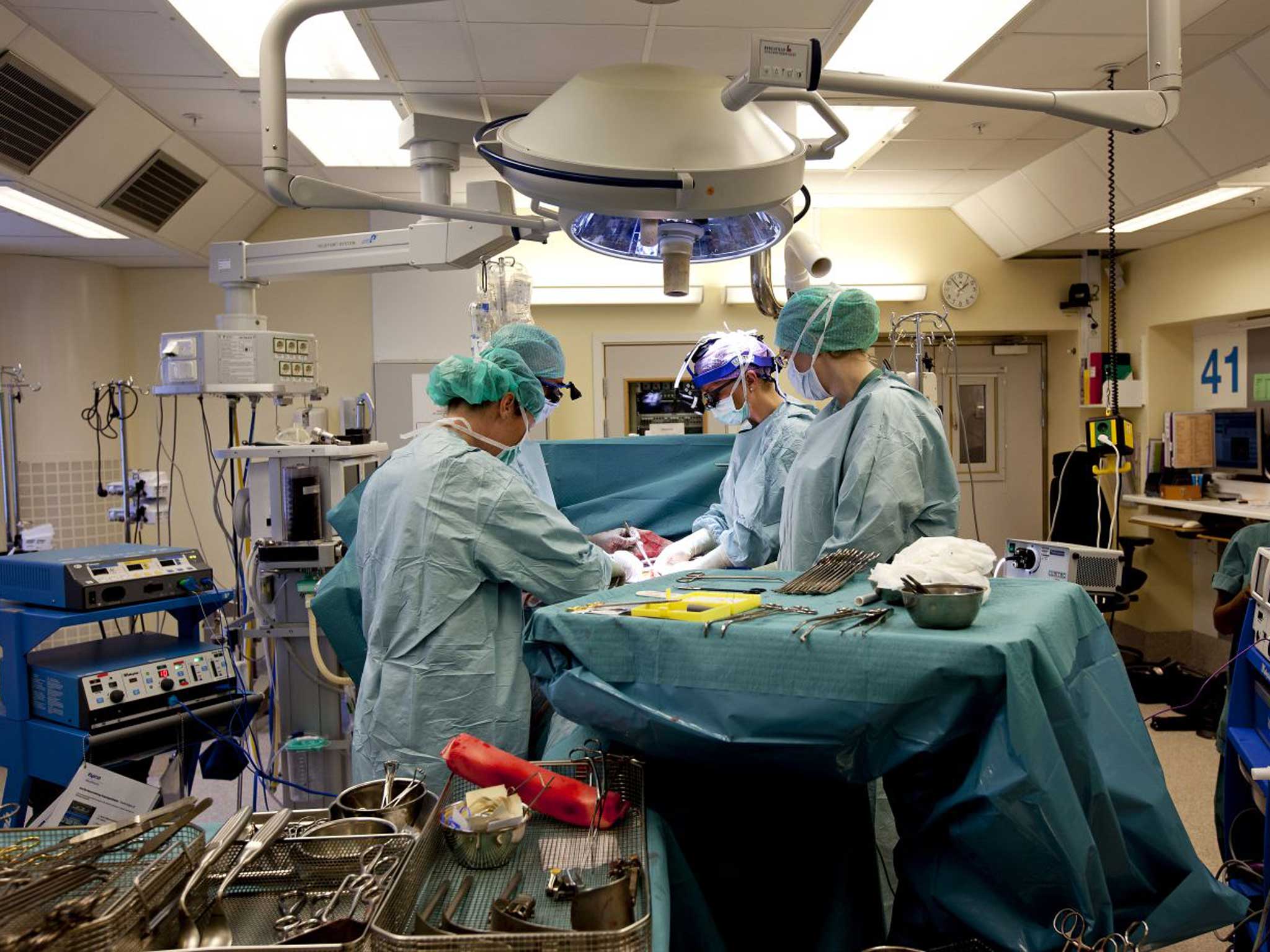If men suffered from endometriosis, it definitely wouldn't take up to a decade to diagnose
NICE have released guidelines asking GPs to listen to women who say they are in crippling pelvic pain. It's very generous of them to do so, but why should they have to?


Your support helps us to tell the story
From reproductive rights to climate change to Big Tech, The Independent is on the ground when the story is developing. Whether it's investigating the financials of Elon Musk's pro-Trump PAC or producing our latest documentary, 'The A Word', which shines a light on the American women fighting for reproductive rights, we know how important it is to parse out the facts from the messaging.
At such a critical moment in US history, we need reporters on the ground. Your donation allows us to keep sending journalists to speak to both sides of the story.
The Independent is trusted by Americans across the entire political spectrum. And unlike many other quality news outlets, we choose not to lock Americans out of our reporting and analysis with paywalls. We believe quality journalism should be available to everyone, paid for by those who can afford it.
Your support makes all the difference.If men had periods, and suffered with chronic menstrual pain, do you think it would take seven-and-a-half-years before they found out why? That’s currently the appalling average waiting time for women to be diagnosed with endometriosis – an incurable condition which affects one in 10 women. Today, the National Institute of Clinical Excellence (NICE) has issued its first ever guidance on the treatment and diagnosis of endometriosis, but why has it taken so long when the illness is as prevalent in women as diabetes, affecting 1.5 million in the UK? I can’t help but question whether the reason is because pain which affects only women, and which is linked to their periods, is not taken seriously.
It's hard to understand why treatment and diagnosis of endometriosis are so far behind other comparable illnesses affecting the same number of people. If the disease affected both men and women, would more have been done to find better treatments? NICE has advised doctors to listen to women when they complain of crippling pelvic pain. It’s frustrating that medical professionals need a document to tell them this. What have they been doing up until now? I was advised by one GP to take paracetamol and use a hot water bottle for my debilitating pelvic pain. His suggestion was as ridiculous as telling someone turning up at A&E suffering a heart attack to go home and pop an aspirin.
When I tell people I suffer with endometriosis, very often their response is to ask what it is. Unfortunately, despite the thousands of women who have been diagnosed, few choose to talk about it, resulting in a severe lack of understanding and awareness. Some of the symptoms of endometriosis are embarrassing – painful bowel movements, pain during sex, fertility problems and heavy, painful periods, caused by cells similar to those lining the womb found elsewhere in the body. So it’s no surprise that it is not openly discussed when periods are still seen as some sort of embarrassing secret.
Periods happen to half the population at some time in their life, yet there is still a stigma attached to talking about them. In August last year, Chinese Olympic swimmer Fu Yuanhui found herself at the centre of media attention after making a simple comment explaining the reason for her poor performance was down to her period. Yet if men endured something similar every month, which had the potential to affect their physical ability, I doubt there would be the same reaction. Sports commentators would already be openly debating whether a footballer’s lethargy on the pitch was down to his menstrual cycle, or if his outburst at another player was a result of PMT.
I was diagnosed with endometriosis eight years after I first visited my GP with symptoms. Yet even following diagnosis, I still wasn’t taken seriously. I had surgery to remove some of the disease, but afterwards still had pain. Pain caused by endometriosis does not correlate to the amount of disease present. As my surgeon was unable to remove all the endometriosis, it should have come as no surprise that I was still suffering. Instead, this so called “expert” questioned whether I had been sexually abused, and if this could be the cause of my pain. It wasn’t, I responded. His arrogance was astounding – rather than accept the surgery wasn’t as successful as hoped, he wanted to dismiss my pain as emotional scars of sexual abuse which had never happened.
My desperation to relieve the relentless pain led me to taking morphine, a powerful drug which left me drowsy, spaced-out and unable to do anything. The pain was like barbed wire twisting the inside of my pelvis, which tightened every time I moved. The cruel irony was that the only other treatment available was that which stopped my periods at a time when I very much wanted to start a family. Yet without hormonal based drugs, I wasn’t able to conceive anyway because trying was too painful. One doctor jokingly advised me to down a bottle of wine to get through the pain of intercourse, because becoming pregnant could relieve my symptoms, he said, as if having a baby was an acceptable long-term solution to my pain.
I felt angry and frustrated that there weren’t better treatments available, and that the professionals I did see knew so little about the condition, they were at risk of causing more harm than good.
The illness costs the UK economy £8.5bn a year in treatment and loss of work. Surely it's time to start allocating proper funds to finding better treatment? Doctors really shouldn’t need NICE to tell them to listen to their patients when they present with pelvic pain, and the guidance highlights how far behind we are when it comes to offering acceptable, effective treatment of endometriosis. It’s time to listen to women and take their pain seriously.
Join our commenting forum
Join thought-provoking conversations, follow other Independent readers and see their replies
Comments